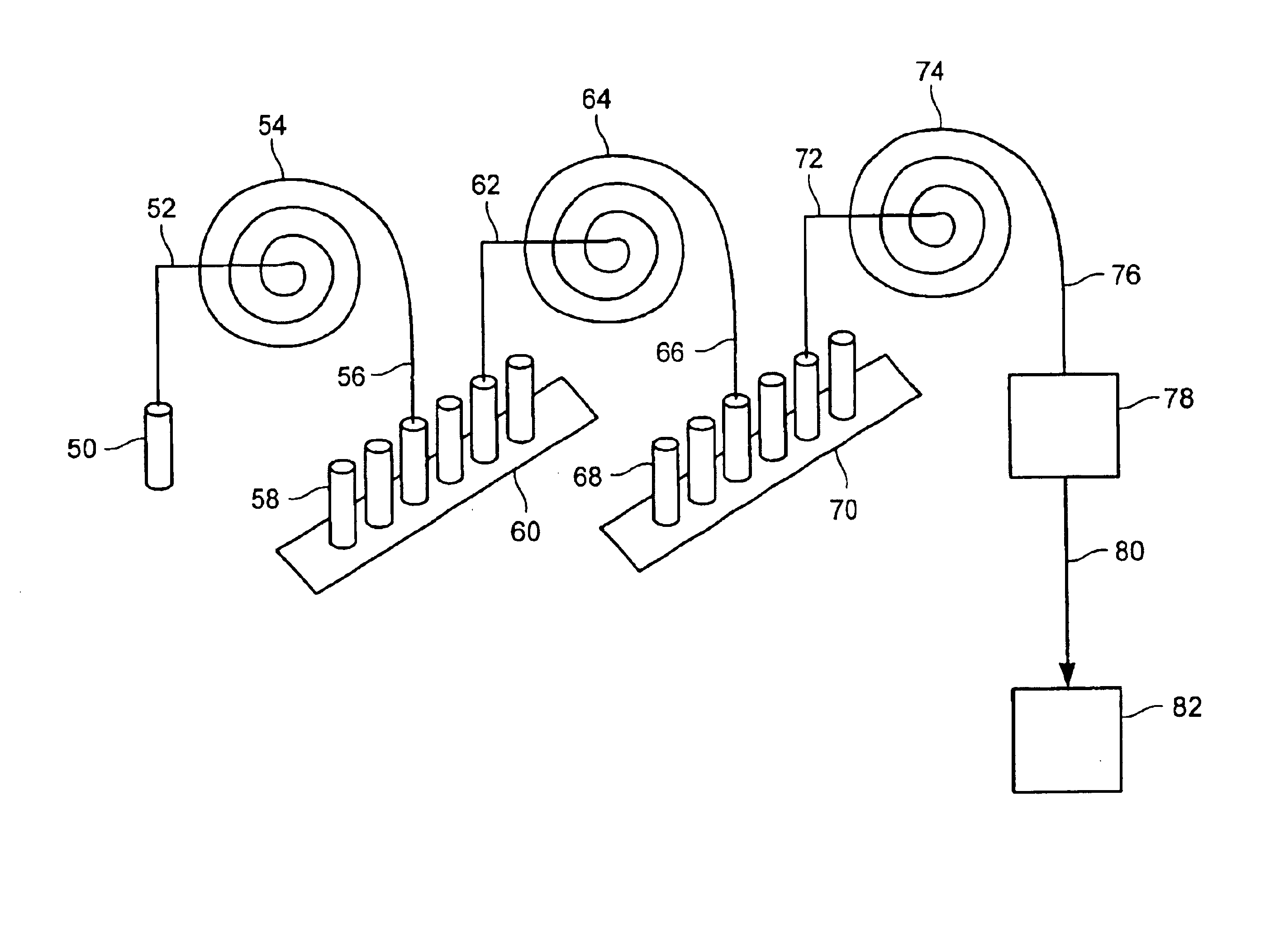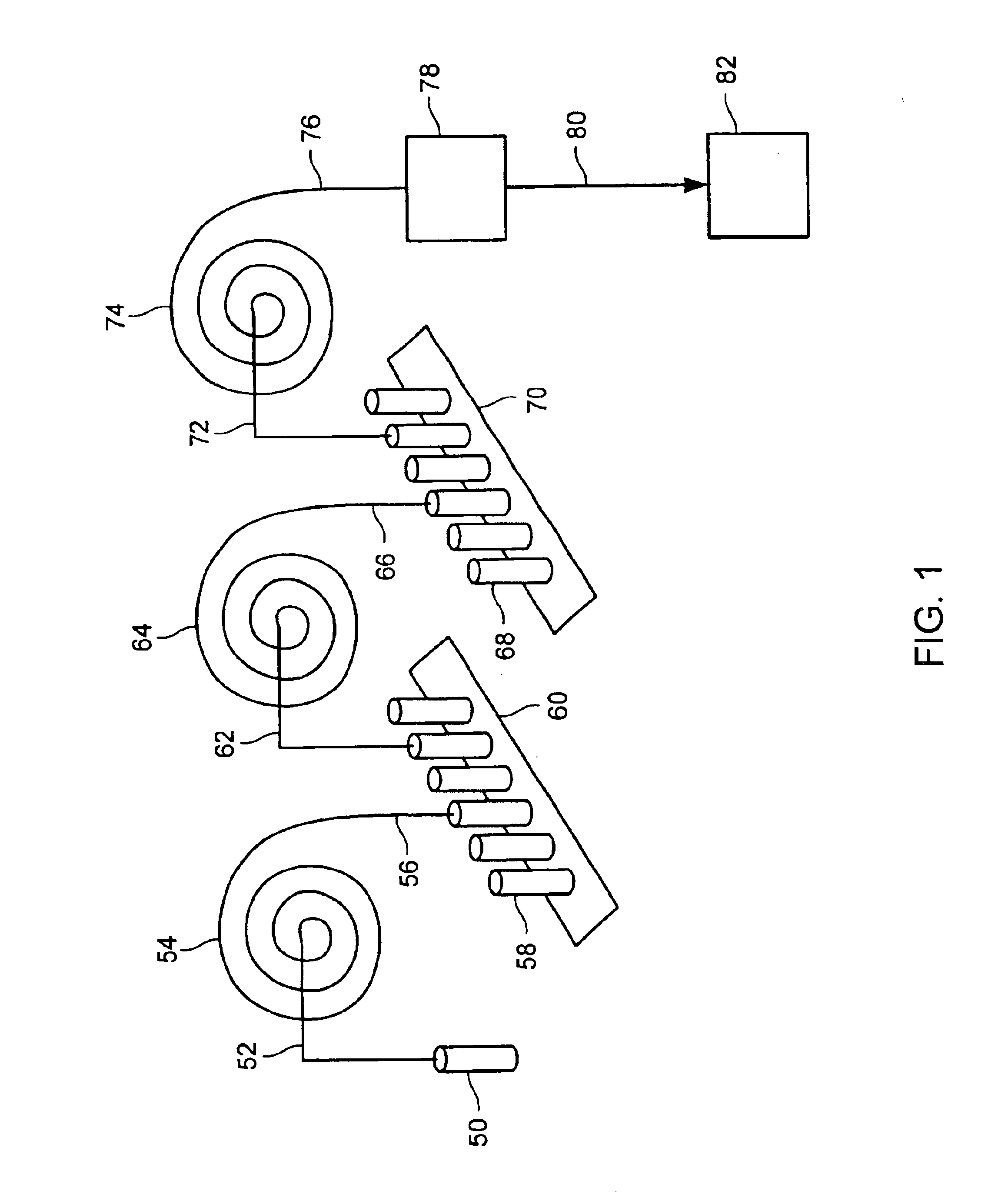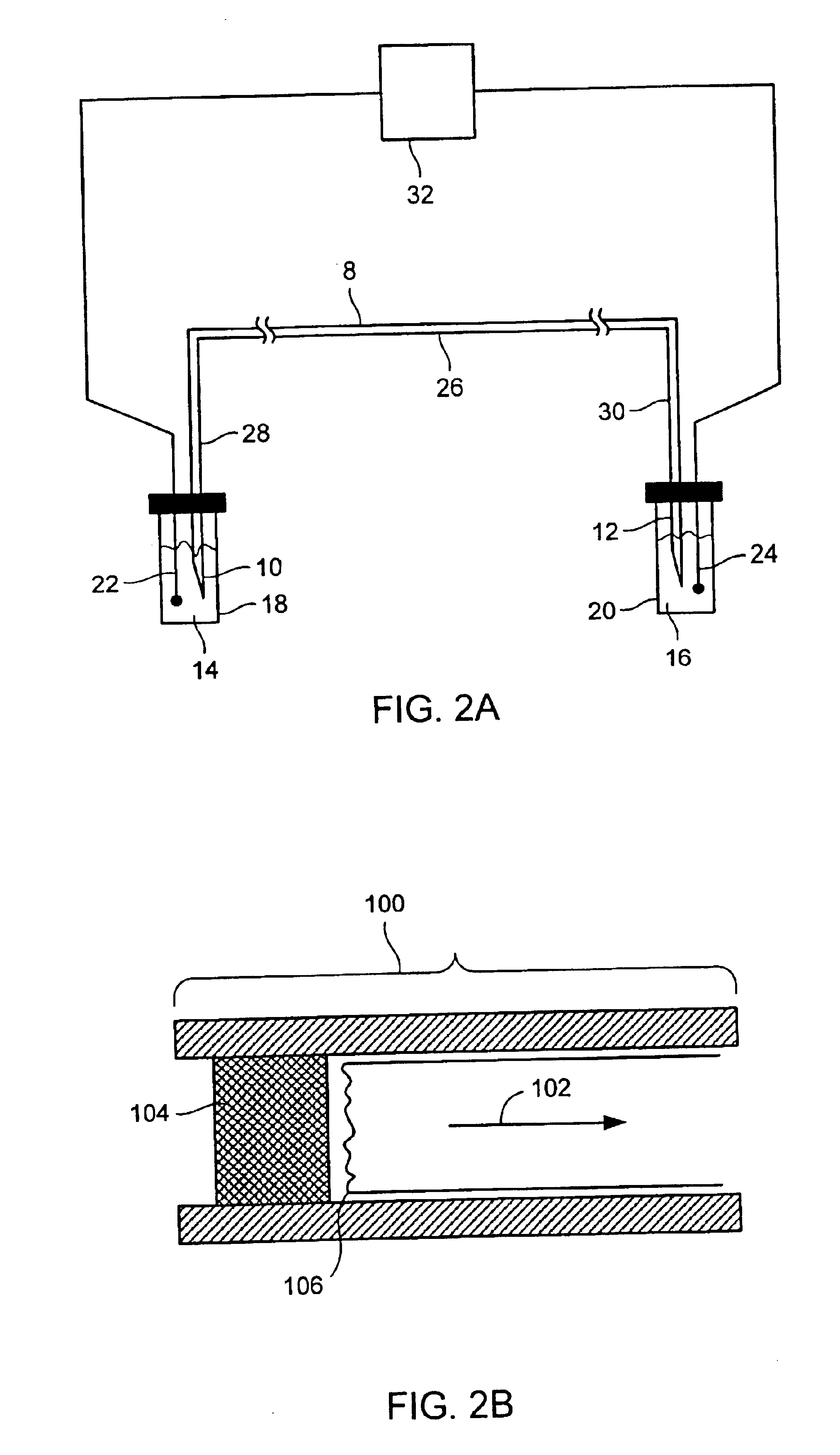Methods for conducting metabolic analyses
a metabolic analysis and metabolic technology, applied in the field of metabolic analysis and separation technology, can solve the problems of limited class of cellular proteins, poor correlation between gene expression measured by mrna level and active gene product formation, etc., and achieve the effect of simplifying the analysis and simplifying the method
- Summary
- Abstract
- Description
- Claims
- Application Information
AI Technical Summary
Problems solved by technology
Method used
Image
Examples
example 1
CZE Separation of Unlabeled Proteins
Each of five proteins (see Table 1) were obtained from Sigma-Aldrich and were suspended at 5 mg / ml in an aqueous denaturing sample buffer consisting of 25 MM tris(hydroxymethyl)aminomethane phosphate (pH 4.0), 0.5% by weight IGEPAL CA-630 (obtained from Sigma-Aldrich, Cat # I3021), and 1% by weight tris(2-carboxyethylphosphine)hydrochloride (TCEP, obtained from Pierce, Cat # 20490ZZ). The protein samples were denatured in this sample buffer by heating at 95° C. for 15 min. Each of the five denatured protein samples were diluted into a cZE sample buffer to create a final solution consisting of 25 mM tris(hydroxymethyl)aminomethane phosphate buffer (pH 4.0), 8 M Urea, and a final concentration of 0.2 mg / ml of each of the five proteins. Control samples were also prepared of each denatured protein separately at 0.5 mg / ml final concentration in the same sample buffer.
TABLE 1Protein StandardsProteinCat #plMW (kDa)Hen egg white conalbuminC 07556.0, 6.3, ...
example 2
CZE Separation of Labeled Proteins with Fraction Collection
Each of the five proteins described in Example 1 was suspended at 10 mg / ml in a denaturing buffer containing 1% by weight of sodium dodecyl sulfate and 1% by volume 2-mercaptoethanol. The proteins were denatured in this buffer by heating at 95° C. for 15 min. The denatured protein samples were labeled with 4-sulfophenylisothiocyanate (SPITC) obtained from Sigma-Aldrich (Cat # 85,782-3) and used as supplied. Labeling was accomplished by adding 0.01 ml of triethylamine, 0.01 ml of 2 M acetic acid and 0.02 ml of a 10% by weight solution of SPITC in water to 0.1 ml of each denatured protein sample. The reaction mixture was heated at 50° C. for 24 h.
A quantity of 0.05 ml of each of the SPITC-labeled protein standards was mixed together and separated by cZE as described in Example 1, with the exception that the pH of the separation buffer was adjusted to 3.0. The individual SPITC-labeled proteins were resolved (FIG. 7). Thus, this...
example 3
CIEF First Dimension Separation with Fraction Collection
Bovine Serum Albumin, Carbonic Anhydrase, and Conalbumin were used as supplied from Sigma-Aldrich (Table 1D. Each protein was denatured as described in Example 1. A 0.01 ml aliquot of each denatured protein sample was added to 0.2 ml of the CIEF focusing buffer. The CIEF focusing buffer consisted of 0.4% by weight hydroxymethyl cellulose solution (Beckman-Coulter eCAP CIEF Gel Buffer, Cat # 477497) containing 1% by volume pH 3-10 Ampholytes (Fluka, Cat # 10043) and 1% by weight 3-[(3-cholarnidopropyl) dimethylammonio]-1-propane sulfonate.
A poly(ethylene glycol)-coated 60 cm long 0.1 mm internal diameter fused silica capillary (Supelcowax 10, Supelco, Cat # 25025-U) was filled with the protein sample in the focusing buffer. The capillary contents were focused between 10 mM phosphoric acid and 20 mM NaOH reservoirs for 7.5 min at 500 V / cm and 25 C. A 0.5 psi pressure gradient was then applied between the anolyte and catholyte res...
PUM
| Property | Measurement | Unit |
|---|---|---|
| internal diameters | aaaaa | aaaaa |
| internal diameters | aaaaa | aaaaa |
| length | aaaaa | aaaaa |
Abstract
Description
Claims
Application Information
 Login to View More
Login to View More - R&D
- Intellectual Property
- Life Sciences
- Materials
- Tech Scout
- Unparalleled Data Quality
- Higher Quality Content
- 60% Fewer Hallucinations
Browse by: Latest US Patents, China's latest patents, Technical Efficacy Thesaurus, Application Domain, Technology Topic, Popular Technical Reports.
© 2025 PatSnap. All rights reserved.Legal|Privacy policy|Modern Slavery Act Transparency Statement|Sitemap|About US| Contact US: help@patsnap.com



